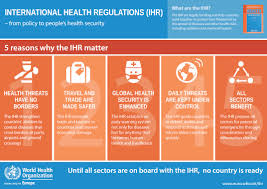
Safeguarding Wellness: Navigating Public Health Regulations
The Pillars of Public Health
Public health regulations form the bedrock of a society’s efforts to safeguard the well-being of its citizens. These regulations encompass a wide array of measures designed to prevent, control, and respond to health threats that can impact communities at large. From infectious diseases to environmental hazards, public health regulations are the pillars supporting the collective wellness of a population.
Epidemiological Surveillance: Tracking Health Trends
At the heart of public health regulations lies the practice of epidemiological surveillance. This involves the systematic collection, analysis, and interpretation of health-related data to identify patterns and trends. By closely monitoring the occurrence of diseases and health events, authorities can deploy targeted interventions and implement regulations to curb the spread of illnesses within communities.
Vaccination Mandates: Upholding Herd Immunity
Vaccination mandates stand as a crucial component of public health regulations, aimed at upholding herd immunity. These regulations require individuals to receive specified vaccinations to prevent the spread of infectious diseases. Upholding vaccination mandates not only protects individuals but also contributes to the broader community’s resilience against preventable illnesses.
Quarantine and Isolation Measures: Containing Contagion
In the face of infectious disease outbreaks, public health regulations often include quarantine and isolation measures. Quarantine is imposed on individuals who may have been exposed to a contagious disease, while isolation is applied to those already infected. These measures are essential for containing the spread of diseases and protecting the broader community from potential contagion.
Food Safety Regulations: Preserving Well-being
Food safety regulations play a critical role in safeguarding public health by ensuring the safety and quality of the food supply. From production to distribution and consumption, regulations are in place to prevent foodborne illnesses. These measures include hygiene standards, inspection protocols, and traceability requirements, all contributing to the preservation of well-being.
Environmental Health Standards: Balancing Ecological Impact
Public health regulations extend beyond infectious diseases to address environmental factors that impact health. Standards regulating air and water quality, waste disposal, and occupational exposure contribute to a balanced ecological impact on public health. By mitigating environmental hazards, these regulations help create healthier living and working environments.
Health Information Privacy: Balancing Transparency and Confidentiality
In the digital age, public health regulations also encompass health information privacy. Striking a delicate balance between transparency and confidentiality, these regulations ensure the protection of individuals’ health data. Robust privacy measures are essential to foster trust in public health initiatives, encouraging individuals to participate in programs and share information for the greater good.
Emergency Preparedness and Response: Adapting to Crises
Public health regulations include provisions for emergency preparedness and response. Whether facing a natural disaster, bioterrorism threat, or a novel infectious disease, regulations guide authorities in adapting swiftly to crises. Establishing clear protocols for communication, resource allocation, and collaboration ensures an effective response to unexpected health challenges.
Occupational Health and Safety Standards: Workplace Wellness
Workplace wellness is a vital aspect of public health, and occupational health and safety standards contribute significantly. These regulations establish guidelines for ensuring safe working conditions, protecting employees from occupational hazards, and preventing work-related illnesses. Prioritizing occupational health supports the overall well-being of the workforce.
Community Health Promotion: Fostering Healthy Lifestyles
Beyond regulations focused on diseases and hazards, public health initiatives also emphasize community health promotion. Encouraging healthy lifestyles, preventing chronic diseases, and addressing social determinants of health are integral components. Education, awareness campaigns, and community engagement foster a proactive approach to well-being.
To delve deeper into the realm of public health regulations and their impact on community wellness, visit Josslawlegal.my.id. Navigating the intricate web of regulations requires a comprehensive understanding of epidemiology, legal frameworks, and community dynamics. By upholding public health regulations, societies can fortify their resilience against health threats and foster the conditions for collective well-being.


